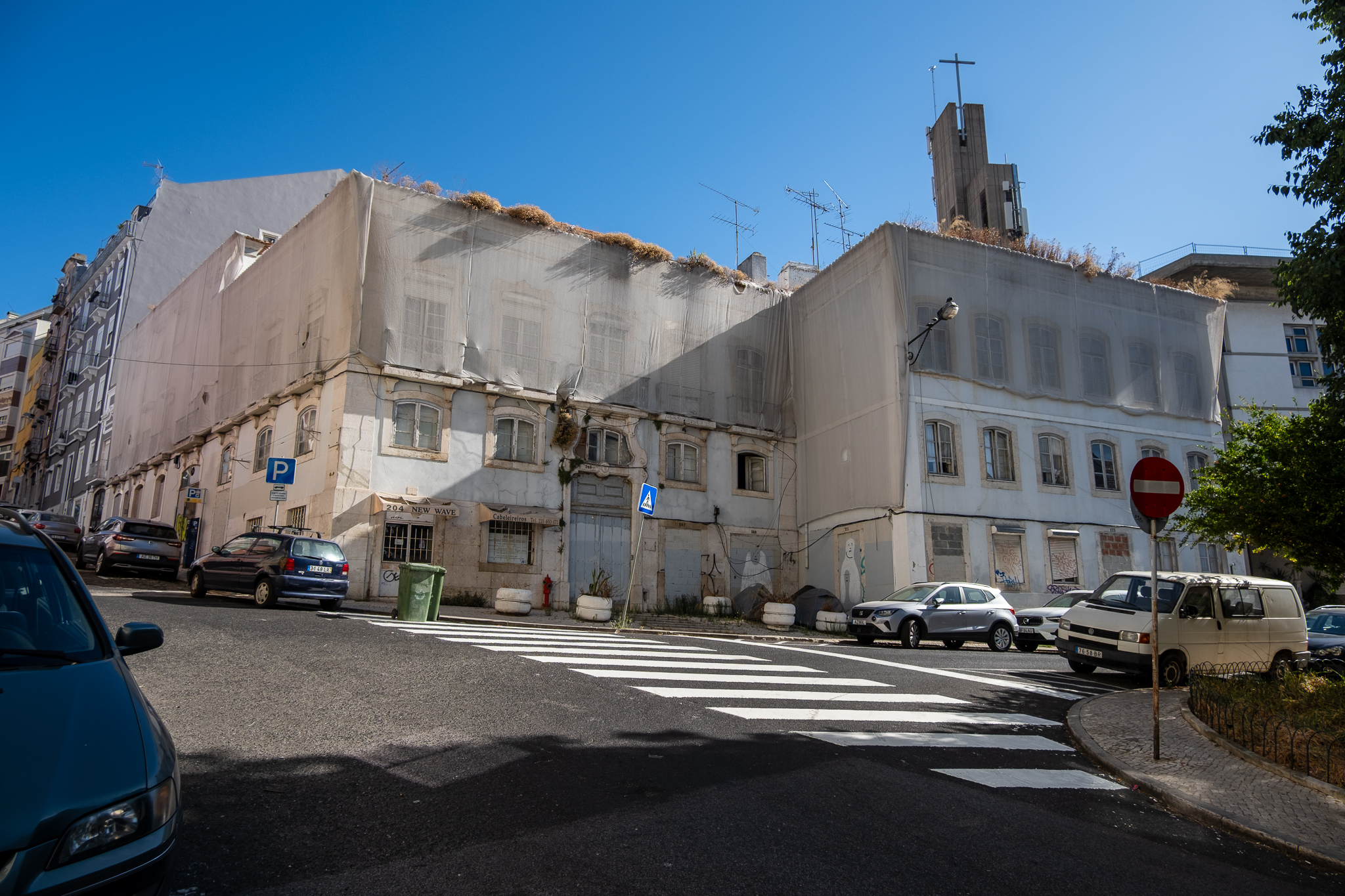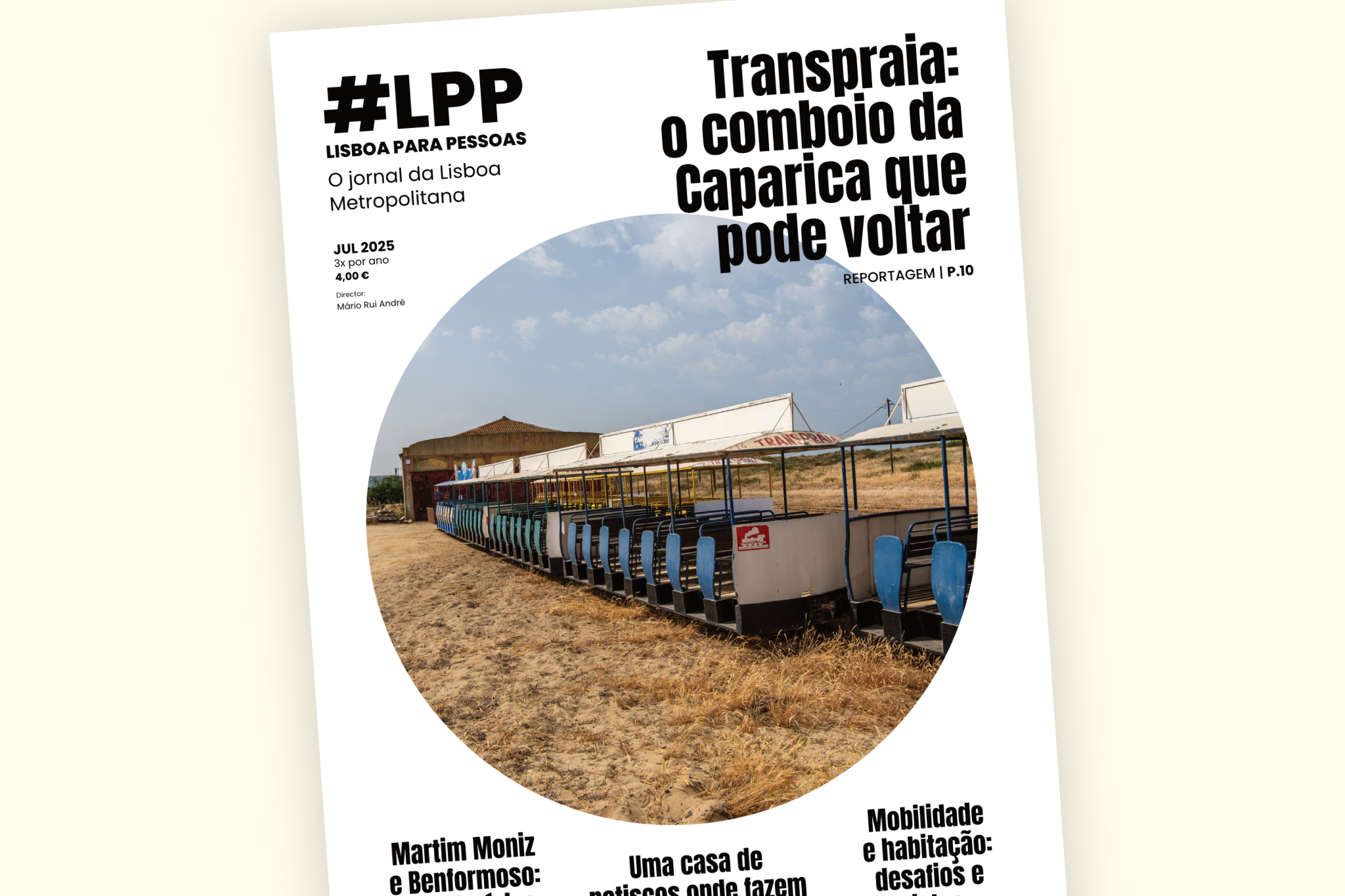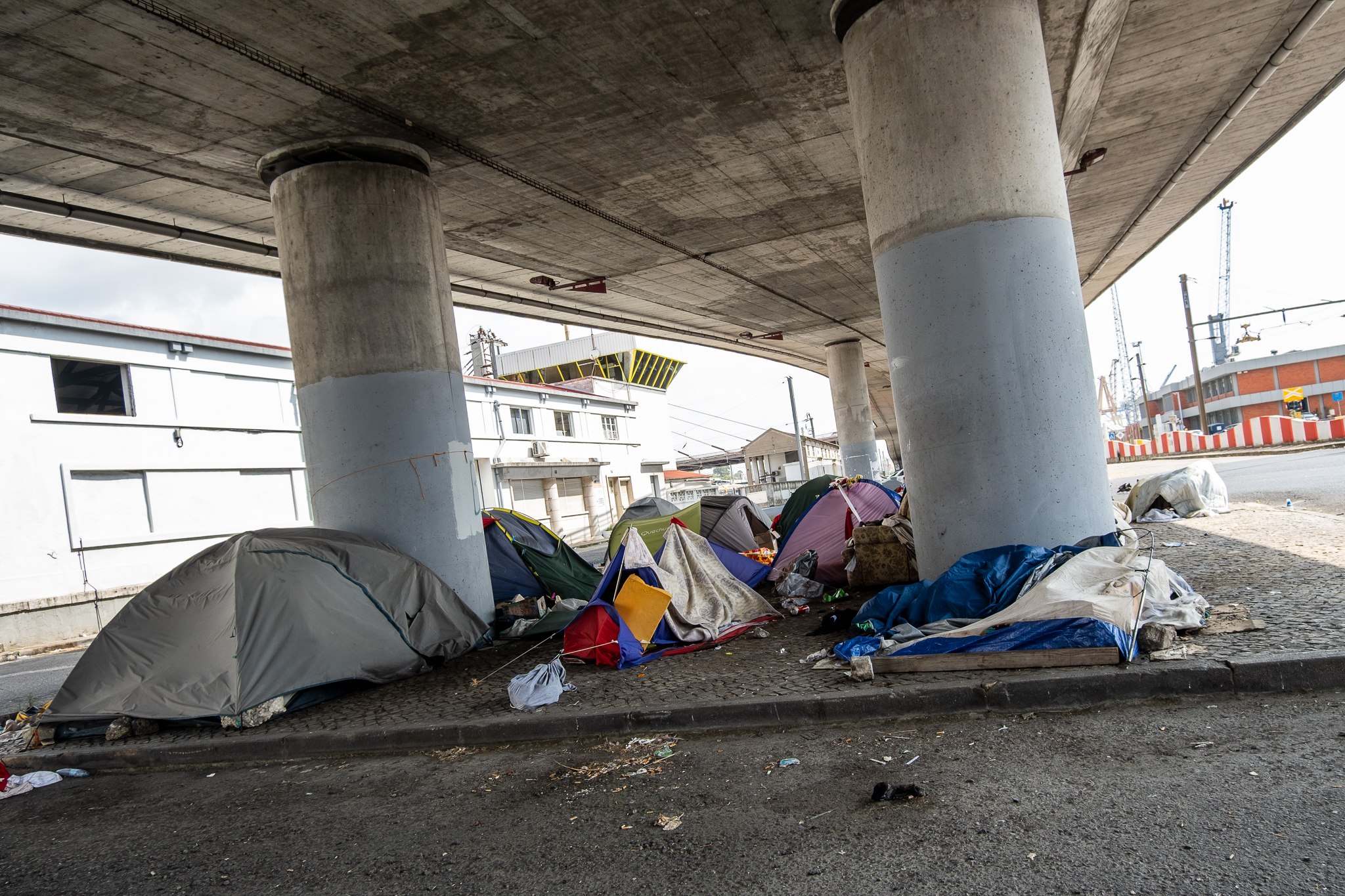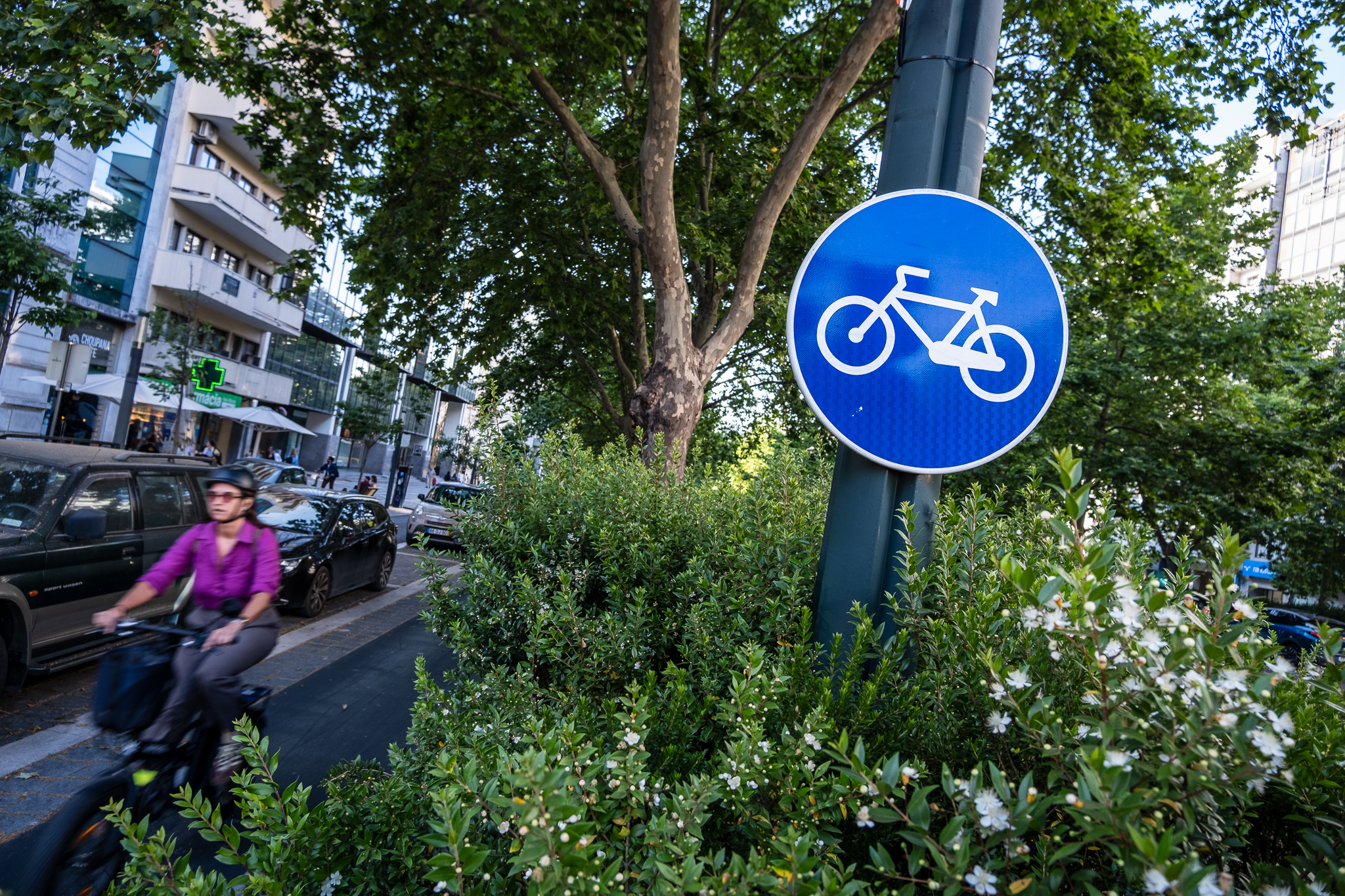"Between two hills there is always a valley." And Lisbon has several valleys. Five of them will be discussed throughout this year: Chelas, Santo António, Almirante Reis, Alcântara and Ajuda. The sessions take place between March and July at the Lisbon Urban Information Center (CIUL) and are free admission.

"Between two hills there is always a valley." Joana Almeida, Lisbon's Councillor for Urbanism, opened the tenth edition of the Urbanism Meetings on Lisbon Urban Information Center (CIUL)an annual series of events dedicated to thinking about and discussing the city from an urbanistic point of view, and this year will focus on five valleys of the city. And if it is true that "Lisbon has not only seven hills, nor five valleys"In these meetings there will be five valleys under discussion - coinciding with the five valleys considered as priority intervention by the Lisbon City Hall.
The sessions at CIUL on the valleys of Lisbon will be held between March and July, from 6 pm, and admission is free. On March 23, they will discuss the Alcantara Valley; on April 20th, it will be the turn of Chelas Valley; on May 18th, we will talk about Vale da Ajuda; on June 15th, from Almirante Reis Valley; and, finally, on July 6th, of the Vale de Santo António. You can follow our calendars to be aware of these dates.
The start of this edition of the Urbanism Meetings was made with an introductory talk with the Councilwomen of Urbanism and Housing, Joana Almeida and Filipa Roseta, and with the geographer Jorge Gaspar. The session began with a first intervention by Councilwoman Almeida, who presented the program 5 ValleysThis program, which the town's Urbanism division has been working on. This program has two main objectives:
- on the one hand, remove barriersimproving connectivity along valleys and promoting proximity between slopes;
- on the other, promote social and territorial cohesionIt is the best way to create a green space, sealing the different urban networks, promoting the green structure, and creating pedestrian connections.
Lisbon will think about 5 of its valleys
If the hills of Lisbon "have always been notable and outstanding points in the city"recognized by all, the valleys are often forgotten in the collective memory, even though they have "stories of very own occupations"said Joana. The Councillor for Urbanism looks at Lisbon's valleys as "territories of opportunity for intervention and it is, in this sense, that we selected some valleys in the city, some already well built and consolidated, others more forgotten"to work on the program 5 Valleys and in the present cycle of Meetings. "The vouchers we will address here have very different realities and will need specific needs"he said, summarizing what is being thought within the municipality for each of the five priority valleys.
- On Chelas ValleyThe project, which is about 4 km long, is being diagnosed and the strategy to be followed is being defined. "a new centrality" with the construction of the new Lisbon Oriental Hospital (already awarded by the Government). "There is going to be a whole new city there resulting from this new hospital pole and that should be studied"said Joana Almeida. The Councillor for Urban Planning also highlighted the high ecological potential of the area and the fertile soils - this Valley could become the great vegetable garden of Lisbon. "We have an identity of Chelas associated with the occupied vegetable gardens, the whole occupation by vegetable gardens along this valley"reinforcement. On the other hand, the whole area awaits the construction of the future Third Crossing of the Tagus and several new affordable housing projects are planned for it. At the moment, Joana sees the Chelas area as lacking cohesion. "a collection of isolated neighborhoods, unconnected to each other and lacking several features of urban life".
- On Vale de Santo AntónioWith a length of about 1 km, a new Vale de Santo António Urbanization Plan (PUVSA) with a strong housing component and the creation of multifunctional neighborhoods. "Here the housing component should be very present"he said. "In this area, 95% is municipal property, and so there's a unique opportunity to think about this valley, still with these river views that it has." The PUVSA that the municipality is now working on will be an update to the current Plan, which dates back to 2012; Joana clarified that the new project will retain much of the essence of the previous one but with different zoning for housing. "The water lines [pre-existing in the Vale de Santo António] will be the starting point for the design of this territory"There will be a large urban park, viewpoints will be preserved, and pedestrian circuits will be defined to encourage walking;
- On Almirante Reis ValleyWith about 3 km, work is underway on the already announced Integrated Projectwith an analysis and diagnosis of the existing situation, the definition of what the existing canal space can be, and the study of innovative public space solutions. "The big challenge is the narrow channel space, where there are areas where we have no more than 25 square meters"explained Joana Almeida. "We have sidewalk, we have bicycle circulation, we have parking, we have loading and unloading, and we have public transportation and private transportation. And we still have the issue of afforestation and heat waves."he detailed. "The real challenge is how do we integrate into the narrow channel all these functions, ensuring, for example - and it's a problem that exists today, at the level of the soft modes - comfort and safety. Neither the pedestrian nor the cyclable have comfort and safety at the moment."

- On Alcantara ValleyThe Integrated Program is also expected to be completed, as well as the long-awaited Green Corridor. "Here the Avenida de Ceuta is clearly a barrier" and you have to realize "how do we reduce this barrier effect and how do we articulate the slopes that are cut by the highway and valley barrier"identified Joana Almeida. The Councilwoman also pointed out the different neighborhoods in the area "that have a need for requalification at the level of public space and urban design"but also of the building itself. The articulation of soft mobility, pedestrian and cycling, in this Alcântara Valley is also a concern.
- On Vale da Ajuda1.8 km long, there are "a series of challenges"and it is expected an action that is more longitudinal than vertical in relation to the Tagus River, in the sense of sewing urban connections and organizing a disperse and disintegrated territorywhich is formed by the Rio Seco and Boa Hora areas. Here we plan to work on the articulation of this fragmented fabric, on public space interventions, on the definition of pedestrian paths, and on the ecological valorization of the valley itself, where a Green Corridor already exists (the Rio Seco Green Corridor, connected to Monsanto, with vegetable gardens and an urban park).
"Thinking about these valleys requires this integrated view"Joana Almeida also pointed out. "There is an integrated view here of architecture, engineering, geography, history, sociology." A more in-depth look at the work that is being and will be done in each of these valleys was left for the following sessions.
For this first introductory session, geographer Jorge Gaspar brought definitions of valley and other associated terminology, such as river, stream, gully or hedgeto get the audience thinking about them. And he recalled that "valleys have a relationship with watercourses, but we have valleys apparently without water"referring to the example of the Alcântara Valley, whose stream is piped. Gaspar listed the different economic functions that valleys can have: from agriculture to industry to transportation. "It's very interesting to see that the valleys are linked to accessibility to the city"as is the case of the old Sacavém Road, made up of the well-known Almirante Reis axis, or the Sintra Road, today IC19.
As a provocation, Gaspar left an appeal to keep the original name of Vale Escuro (Dark Valley) for the now named Vale de Santo António - the "real" Vale de Santo António is another, it is nearby in the area of Rua do Vale de Santo António. The session ended with an intervention by the Councilwoman for Housing, Filipa Roseta, who made a preview of the housing strategy that would be presented a week later.
The next sittings
Unfortunately, this first session of this edition of the Urbanism Meetings was not broadcast online, but will have been recorded for archiving, along with other events in this cycle that have already taken place. Since there is no tradition of making such content available, it is best to keep an eye out for subsequent sessions and attend in person:
- March 23rd - Alcântara Valley;
- April 20th - Vale de Chelas;
- May 18th - Vale da Ajuda;
- June 15th - Almirante Reis Valley;
- July 6th - Vale de Santo António.
The sessions will be at Lisbon Urban Information Center (CIUL)located in Picoas, and should start at 18 hours. The entrance is free but, to guarantee your place, you must register using the form that will be divulged close to each date. on CIUL's Facebook page. Alternatively, you can follow the Lisbon For People calendars.






